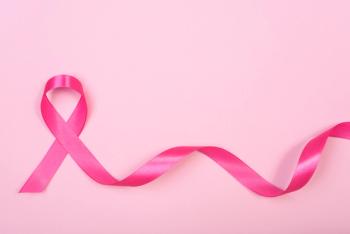
New guidelines for bacterial vaginosis diagnosis and treatment
The CDC updated its guidelines for diagnosing and treating STIs, which included updates on the diagnosis and treatment of bacterial vaginosis (BV) in pregnant and nonpregnant women.
The Centers for Disease Control and Prevention (CDC) recently updated their diagnosis and treatment guidelines for
Diagnostic Considerations
According to the CDC, BV can be diagnosed via Amsel’s diagnostic criteria or by determining the Nugent score from a vaginal Gram stain. Vaginal Gram stain is the reference standard method for BV diagnosis. It is used to determine the relative concentration of lactobacilli, small gram-negative and gram-variable rods (i.e., G. vaginalis or Bateroides), and curved gram-negative rods (i.e., Mobiluncus) characteristic of BV.1
Point-of-care tests and nucleic acid amplification tests (NAATs) may also be used for BV diagnosis.
A Nugent score of 0-3 is consistent with a Lactobacillus-predominant vaginal microbiota, 4-6 with intermediate microbiota (emergence of G. vaginalis), and 7-10 with BV.
To diagnose BV via Amsel criteria, at least four of the following symptoms or signs must be present:
- Homogeneous, thin discharge of a milky consistency that smoothly coats the vaginal walls;
- Clue cells (e.g., vaginal epithelial cells studded with adherent bacteria) on microscopic examination;
- pH of vaginl fluid >4.5; and/or
- Fishy odor of vaginal discharge before or after addition of 10% KOH (i.e., the whiff test).
Detection of at least three Amsel criteria has been correlated with results by Gram stain (1001). The sensitivity and specificity of the Amsel criteria are 37%–70% and 94%–99%, respectively, compared with the Nugent score (1002).1
Point-of-care tests available for BV diagnosis:
- The Osom BV Blue test
- Detects vaginal sialidase activity (Sekisui Diagnostics);
- The Affirm VP III
- An oligonucleotide probe test that detects high concentrations of G. vaginalis nucleic acids (>5 x 105 CFU of G. vaginalis/mL of vaginal fluid) for diagnosing BV, Candida species, and T. vaginalis (Becton Dickinson);
- In symptomatic women, this test is reported to be the most useful—in conjunction with vaginal pH measurement and presence of amine odor (97% sensitivity)—when compared with Nugent score.
Nucleic acid amplification tests for BV diagnosis
NAATs are tests that detect specific bacterial nucleic acids and have high sensitivity and specificity for BV (G. vaginalis, A. vaginae, BVAB2, or Megasphaera type 1), and for certain lactobacilli (Lactobacillus crispatus, Lactobacillus jensenii, and Lactobacillus gasseri). They should only be used only among symptomatic women, the recommendations note, because their accuracy is not well-defined for asymptomatic women.
NAATs can be performed on clinician- or self-collected vaginal specimens with results available in less than 24 hours, depending on the availability of the molecular diagnostic platform.
Five quantitative multiplex PCR assays are available:
- SureSwab BV (Quest Diagnostics);
- Max Vaginal Panel (Becton Dickinson)*;
- Aptima BV (Hologic)*;
- NuSwab VG (LabCorp); and
- OneSwab BV Panel PCR with Lactobacillus Profiling by qPCR (Medical Diagnostic Laboratories).
SureSwab BV, Nuswab VG, and OneSwab BV Panel are lab-developed tests, which require internal validation prior to use for patient care but have good sensitivity and specificity that is similar to FDA-cleared assays.
Treatment
Updated guidelines recommend various oral and intravaginal treatment methods for women with symptomatic BV. Therapy benefits among nonpregnant women include relief of vaginal symptoms and reduce signs of infection. Potential benefits also include a reduction in the risk for C. trachomatis, N. gonorrhoeae, T. vaginalis, M. genitalium, HIV, HPV, and HSV-2.
Recommended Regimens for Treatment of BV
- Metronidazole 500 mg orally 2 times a day for 7 days, OR
- Metronidazole gel 0.75% one full applicator (5 g) intravaginally, once a day for 5 days, OR
- Clindamycin cream 2% one full applicator (5 g) intravaginally at bedtime for 7 days.
“Metronidazole does not inhibit acetaldehyde dehydrogenase, as occurs with disulfiram. Ethanol alone or ethanol-independent side effects of metronidazole might explain the suspicion of disulfiram-like effects. Thus, refraining from alcohol use while taking metronidazole (or tinidazole) is unnecessary. Clindamycin cream is oil-based and might weaken latex condoms and diaphragms for 5 days after use (refer to the clindamycin product labeling for additional information),” the guidelines note.1
Women should be advised to refrain from sexual activity or to use condoms consistently and correctly during the BV treatment regimen. Douching might increase the risk for relapse, and no data support the use of douching for treatment or symptom relief.
Alternative Regimens
- Clindamycin orally 2 times a day for 7 days, OR
- Clindamycin ovules 100 mg* intravaginally once at bedtime for 3 days, OR
- Secnidazole 2 g oral granules in a single dose**, OR
- Tinidazole 2 g orally once daily for 2 days, OR
- Tinidazole 1 g orally once daily for 5 days.
*Clindamycin ovules use an oleaginous base that might weaken latex or rubber products (e.g., condoms and diaphragms). Use of such products within 72 hours after treatment with clindamycin ovules is not recommended.
** Oral granules should be sprinkled onto unsweetened applesauce, yogurt, or pudding before ingestion. A glass of water can be taken after administration to aid in swallowing.
High-dose Vitamin D supplementation has not been determined to decrease BV recurrence in randomized controlled trials and is not recommended.
BV Treatment in Pregnancy
The guidelines do not recommend routine screening for BV among asymptomatic pregnant women at high risk for preterm delivery.
BV treatment is recommended for all symptomatic pregnant women, so as to reduce the possibility of adverse pregnancy outcomes such as premature rupture of membranes, preterm birth, intra-amniotic infection, and postpartum endometriosis.
Metronidazole therapy poses a low risk during pregnancy, according to data from multiple cross-sectional, case-control, and cohort studies of pregnant women. Although it crosses the placenta, no evidence of teratogenicity or mutagenic effects among infants has been found.
Recommended treatment includes 250 mg oral metronidazole 3 times a day, or 500 mg twice a day.
Although data are limited regarding the use of tinidazole in human pregnancies, animal data show moderate risk. Therefore, tinidazole should be avoided during pregnancy. Secnidazole, Clindesse 2% vaginal cream, metronidazole 1.3% vaginal gel, and 750 mg vaginal metronidazole tablets should also be avoided due to lack of data.1
Studies show that, for pregnant women at low risk for preterm delivery, asymptomatic BV treatment does not reduce adverse pregnancy outcomes. However, asymptomatic BV treatment of pregnant women at high risk for preterm delivery, according to seven studies, produced mixed results: one revealed harm, two reported no benefit, and four demonstrated benefit.
Breastfeeding during maternal oral therapy
Metronidazole is secreted in breast milk; however, breastfed infants receive it in lower doses than those used to treat infant infections. Although several studies identified no evidence of metronidazole-associated adverse effects in breastfed infants, certain clinicians recommend deferring breastfeeding for 12-24 hours after maternal treatment with a single 2 g dose of metronidazole. Lower doses, however, produce a lower concentration in breast milk and are considered compatible with breastfeeding.1
Reference
1. Workowski KA, Bachmann LH, Chan PA, et al. Sexually Transmitted Infections Treatment Guidelines, 2021. MMWR Recomm Rep 2021;70(No. RR-4):1–187. DOI:
Newsletter
Get the latest clinical updates, case studies, and expert commentary in obstetric and gynecologic care. Sign up now to stay informed.











